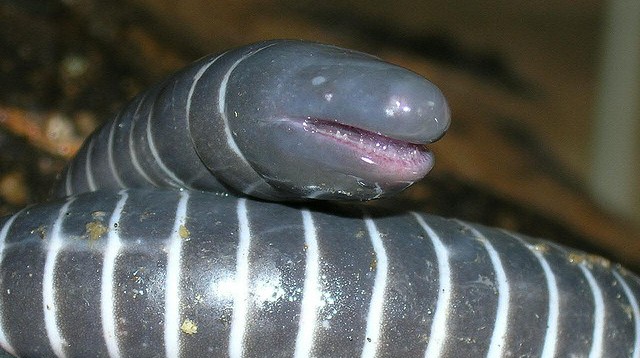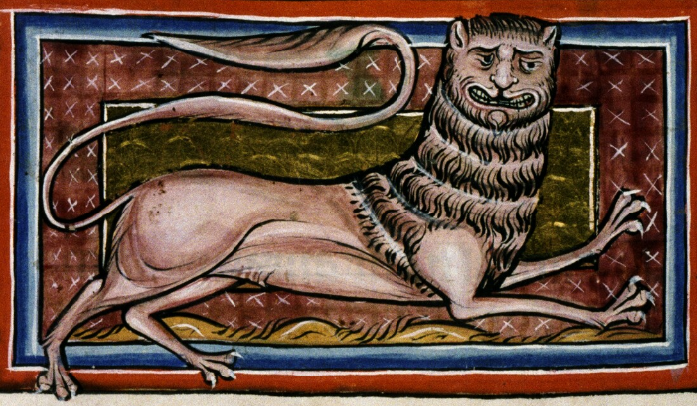The Return of the Caecilia
While caecilians appear worm-like or snake-like, they are limbless amphibians. The largest reach lengths of five feet. Their smooth, moist skin hides calcite scales, and the secretions that keep their skin moist contain a hemolytic toxin that destroys red blood cells. Caecilians are largely blind, able to perceive the presence of light. They burrow, using their strong skulls to force their way through soil. In water, they swim much like an eel. Caecilians have acute olfactory senses.
Caecilia are 30-foot-long wormlike creatures found in the D&D Expert Rulebook. They swallow their prey whole 10% of the time. This monster does not seem to have made the transition to later editions of D&D. Perhaps the Powers That Be didn’t see them as sufficiently different from the more dangerous purple worm, which appears in the same rulebook.
Whatever the reason, I figure a GM can’t have too many giant, voracious predators.

Caecilia
Huge monstrosity, unaligned
Armor Class 14 (natural)
Hit Points 126 (12d12+48)
Speed 25 ft., burrow 20 ft., swim 30 ft.
STR 24 (+7), DEX 11 (+0), CON 18 (+4), INT 1 (-5), WIS 10 (+0), CHA 4 (-3)
Saving Throws Con +7, Wis +3
Damage Resistances piercing from nonmagical weapons
Senses tremorsense 60 ft. (blind beyond this radius), passive Perception 10
Languages —
Challenge 6 (2,300)
Amphibious. The caecilia can breathe air and water.
Keen Smell. The caecilia has advantage on Wisdom (Perception) checks that rely on smell.
Tunneler. The caecilia can burrow through solid rock at half its burrow speed and leaves a 5-foot-diameter tunnel in its wake.
Toxic Secretions. A creature that touches the caecilia or hits it with a melee attack while within 5 feet of it must make a DC 15 Dexterity saving throw or take 2 (1d4) poison damage.
Actions
Bite. Melee Weapon Attack: +10 to hit, reach 10 ft., one target. Hit: 17 (3d6+7) piercing damage plus 5 (2d4) poison damage. If the target is a Medium or smaller creature, it must succeed on a DC 15 Dexterity saving throw or be swallowed by the caecilia. A swallowed creature is blinded and restrained, it has total cover against attacks and other effects outside the caecilia, and it takes 15 (6d4) acid damage at the start of each of the caecilia’s turns.
If the caecilia takes 15 damage or more on a single turn from a creature inside it, the worm must succeed on a DC 17 Constitution saving throw at the end of that turn or regurgitate all swallowed creatures, which fall prone in a space within 10 feet of the caecilia. If the caecilia dies, a swallowed creature is no longer restrained by it and can escape from the corpse by using 20 feet of movement, exiting prone.



